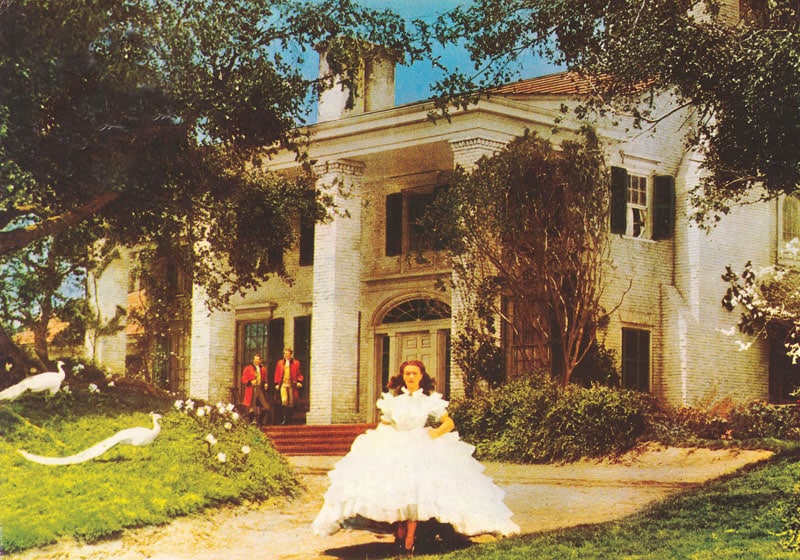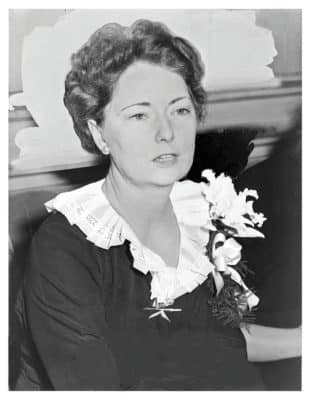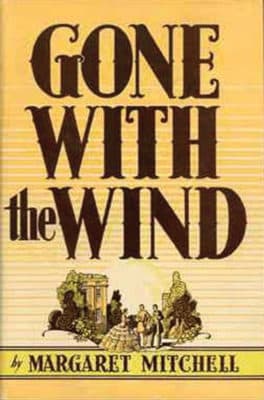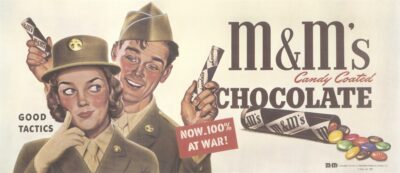In the 1920s, Margaret Mitchell, known as “Peggy” to her friends, worked as an enterprising journalist in Atlanta, GA. It wasn’t unusual. In the 1920s and ’30s, women were streaming into professions such as journalism in large numbers. It wasn’t uncommon, either, for journalists to be aspiring authors. In the mid-1920s, Mitchell suffered a protracted illness. As therapy, she researched and wrote a sprawling Civil War romance. Mitchell originally had no desire to have the novel, eventually entitled “Gone With The Wind,” published. In 1935, however, a talent scout for Macmillan, while scouring the region, met with Mitchell and persuaded her to finish and publish the manuscript. The rest was publishing history. Gone With The Wind sold 175,000 copies in its first year, averaging, over the decades, 1.7 million sales a year in the U.S. alone.
That was only the beginning. What came next was the movie. David O. Selznick won the movie rights and a highly-publicized search for an actress to play Scarlett O’Hara, the novel’s legendary heroine, took place. The role was claimed by Vivien Leigh, a well-regarded British actress. Clark Gable won the role of Scarlett’s beau, Rhett Butler. Leslie Howard played Ashley Wilkes, and another Brit, Olivia de Havilland played Melanie Hamilton. The premiere took place on Dec. 15, 1939, in Atlanta. This cultural sensation was taken to a new level. The movie has long been considered the most widely viewed picture in cinema history.
The times were ripe for both the novel and the movie. During the 1930s, the nation remained in the grip of the Great Depression. Movies did not cost very much, usually only a nickel. Motion pictures became the most popular form of entertainment in the country. Americans did not just attend movies on weekends. Instead, it was common for the average couple to take a trolley car downtown and attend a movie on a nightly basis.

The film also benefited from a bout of nostalgia with the Old South. The capitalist system, which roared throughout the 1920s, had stalled dramatically. The urban/industrial order, which now defined America, didn’t seem very promising. Some Americans turned to socialism; fortunately, only a few embraced fascism, an ideology now devouring Europe. Americans, in all parts of the country, began to romanticize the Old South as a Lost Eden where planters, slaves, sharecroppers and yeoman farmers all happily worked and sang together side-by-side. That world did exist, even though as with any mythology, it collided with a harsher reality. Still, Americans found such images as a pleasing alternative to the grim reality of the Depression.
The 1920s and ‘30s also saw a flowering of creativity in the literature of the American South. Out of Vanderbilt University in Nashville, TN, came the Fugitive/Agrarian literary movement that produced the modernist poetry of John Crowe Ransom, Allen Tate, Donald Davidson and Robert Penn Warren, the manifesto I’ll Take My Stand and a New Criticism approach to literary texts that influenced the teaching of literature for decades to come. Epic fiction by William Faulkner and Thomas Wolfe significantly expanded the frontiers of American literature. In the midst of all this, Douglas Southhall Freeman’s four-volume biography of Robert E. Lee won the 1938 Pulitzer Prize for nonfiction.
In 1937, Gone With The Wind won the Pulitzer for fiction. In 1939, the film swept the Academy Awards, winning the Oscar for Best Picture, Best Director (Victor Fleming), Best Screenplay (Sidney Howard), Best Actress (Leigh) and Best Supporting Actress (Hattie McDaniel). Gone With The Wind was about nostalgia and romance. But it also captured the public’s enduring fascination with the Civil War (as the expatriate author Gertrude Stein once remarked, “nothing will be more interesting in American history as your Civil War.”) It, too, highlighted a woman’s independence in an age when such ambition (not yet labeled feminism) was both common and desirable. Scarlett O’Hara was the quintessential Southern belle, but she wasn’t spoiled. The war taught her the hard realities of life and death on the plantation.
This year marks the 80th anniversary of the movie. In the United States, attitudes towards the antebellum South have changed noticeably. Still, the film’s aesthetic value, especially when capturing the agony of what was at the time history’s most devastating war, plus a punitive postwar reconstruction, remains gripping. What a history Gone With The Wind has enjoyed. The novel has been translated into 27 languages and gains new readers on a daily basis. Gable used the film as a springboard to become America’s most beloved male actor and the beauteous de Havilland continued making movies well into the 1970s.
With Gone With The Wind, all roads lead to Margaret Mitchell. The former journalist took her fame in stride, answering a growing mountain of correspondence, while caring for her ill husband. Alarmed by fame, Mitchell never wrote another novel. In 1949, she met a tragic end, perishing after being injured on the Atlanta streets by a stray cabdriver.
Margaret Mitchell will always be remembered in her prime. While researching the novel, local residents recalled this resolute young woman, walking the downtown streets of Atlanta, weighted down with books and manuscripts. What was this mad woman doing? No one could possibly imagine that those years of toil would produce both the most famous novel and movie of the 20th century. Margaret Mitchell lives.






















